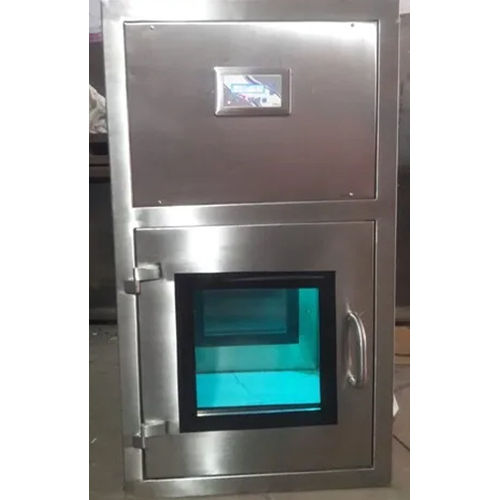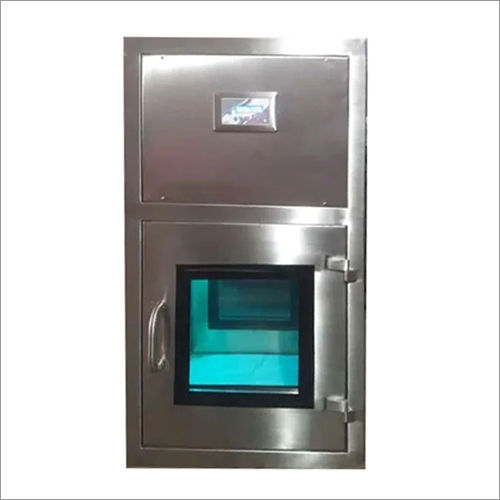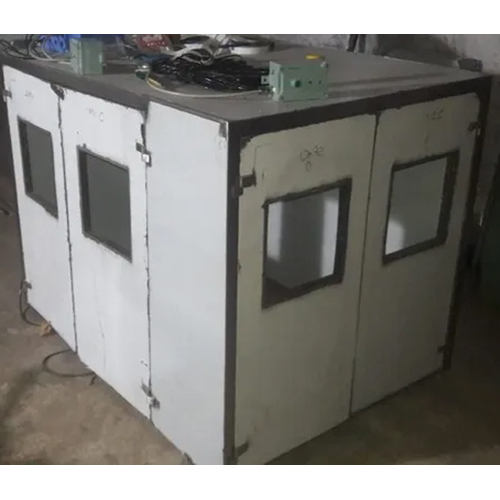Dynamic Pass Throw Boxes
Price 25762 INR/ Unit
Dynamic Pass Throw Boxes Specification
- Dimension (L*W*H)
- Customized / Standard sizes
- Type
- Dynamic Pass Box
- Frame Material
- Stainless steel 304 / 316
- Voltage
- 230 Volt (v)
- Material
- Stainless steel
- Thickness
- 1.2 mm
- Air Flow
- Horizontal / Vertical (Laminar)
- Power Consumption
- Low (as per model)
- Air Volume
- 600-1200 CFM (as per size)
- Feature
- High Quality
- Application
- Lab, Pharma, Clean Room, Hospitals
- Filter Type
- HEPA (99.97% at 0.3 micron), Pre-filter (95% at 5 micron)
- Filters
- HEPA Filter, Pre Filter
- Weight
- Approx. 45-70 kg (depending on size)
- Nozzle
- Steel
- Lighting
- LED / UV Lamp
- Door
- SS Double Door with Electromagnetic Interlocking
- Floor
- Stainless Steel / Smooth, Easy-to-clean Surface
Dynamic Pass Throw Boxes Trade Information
- Minimum Order Quantity
- 5 Units
- Supply Ability
- 10 Units Per Month
- Delivery Time
- 10 Days
- Main Domestic Market
- Tamil Nadu, Pondicherry, All India, Mizoram, Arunachal Pradesh, Sikkim, Delhi, South India, Andaman and Nicobar Islands, West Bengal, Meghalaya, Punjab, Bihar, Goa, Jharkhand, Karnataka, Tripura, Dadra and Nagar Haveli, Himachal Pradesh, Madhya Pradesh, Chandigarh, Jammu and Kashmir, Uttar Pradesh, Telangana, Central India, Lakshadweep, Gujarat, Daman and Diu, Assam, East India, Nagaland, Haryana, Rajasthan, Uttarakhand, Maharashtra, Manipur, North India, Andhra Pradesh, Kerala, Odisha, West India, Chhattisgarh
About Dynamic Pass Throw Boxes
A dynamic pass box is a specialized piece of equipment used to transfer materials between two environments while maintaining cleanliness and preventing contamination. It is commonly used in cleanrooms, laboratories, and other controlled environments where maintaining a sterile environment is crucial.
Image of Dynamic Pass Box
Construction and Operation
A dynamic pass box typically consists of a chamber with two interlocked doors, one on each side. Each door is connected to a separate environment, and the doors are designed to prevent air from flowing from one environment to another. This helps to prevent the spread of contaminants.
Inside the chamber, there is a HEPA filter that cleans the air before it is released into the cleanroom. This further reduces the risk of contamination.
The pass box may also have a blower to circulate the air inside the chamber, which helps to ensure that the air is evenly distributed and that contaminants are not trapped in the corners of the chamber.
Operation
To use a dynamic pass box, the operator simply opens the door on the side where the material they want to transfer is located. They then place the material in the chamber and close the door. The blower then circulates the air inside the chamber, and the HEPA filter cleans the air before it is released into the cleanroom. The operator then opens the door on the other side of the pass box and retrieves the material.
Applications
Dynamic pass boxes are used in a variety of applications, including:
- Pharmaceutical manufacturing:Transferring sterile ingredients and products between different stages of manufacturing
- Electronics manufacturing:Transferring sensitive components between different stages of assembly
- Medical device manufacturing:Transferring sterile medical devices between different stages of manufacturing
- Laboratory research:Transferring samples and materials between different areas of the laboratory
Benefits of Using a Dynamic Pass Box
There are several benefits to using a dynamic pass box, including:
- Prevents cross-contamination:The interlocked doors and HEPA filter help to prevent the spread of contaminants from one environment to another.
- Improves efficiency:Pass boxes can help to improve efficiency by reducing the need for personnel to move between different environments.This can save time and money.
- Protects products:Pass boxes can help to protect products from contamination.This is important in industries such as food and medical device manufacturing,where contamination can make products unusable.
Safety Considerations
When using a dynamic pass box, it is important to follow safety procedures to prevent contamination. This includes:
- Cleaning and disinfecting the pass box regularly:Clean the pass box with a disinfectant solution after each use.
- Wearing gloves and other appropriate PPE when using the pass box:This will help to protect your hands and clothes from contamination.
- Only transferring materials that are clean and free of contaminants:This will help to prevent the introduction of contaminants into the cleanroom.
Comparison of Static and Dynamic Pass Boxes
Both static and dynamic pass boxes are used to transfer materials between two environments while maintaining cleanliness and preventing contamination. However, there are some key differences between the two types of pass boxes:
- Static pass boxes:Static pass boxes simply have two interlocked doors and no HEPA filter.This means that they are not as effective at preventing the spread of contaminants as dynamic pass boxes.
- Dynamic pass boxes:Dynamic pass boxes have a HEPA filter that cleans the air before it is released into the cleanroom.This makes them more effective at preventing the spread of contaminants.
In general, dynamic pass boxes are the preferred type of pass box for use in cleanrooms and other controlled environments. This is because they provide a higher level of protection against contamination. However, static pass boxes may be sufficient for some applications, such as transferring materials between low-risk environments
High-Performance Filtration and Flow Control
Equipped with HEPA filters (99.97% efficiency at 0.3 micron) and pre-filters (95% at 5 micron), these dynamic pass boxes maintain stringent clean room standards by thoroughly filtering air passing through the unit. Horizontal or vertical laminar airflows ensure particles do not accumulate, protecting both product and personnel.
User-Friendly and Customizable Features
Designed for convenience, these pass boxes include adjustable work table heights, electronic interlocking SS double doors, and accessible service panels at the front. With LED or UV lighting, toughened glass/polycarbonate viewing windows, and easy-to-clean matt or glossy stainless steel surfaces, maintenance and use are straightforward.
Versatility in Installation and Application
Dynamic Pass Throw Boxes are suitable for wall-mounted or modular installations and can be custom-fit in various sizes. They are widely used across laboratories, pharmaceutical manufacturing, hospitals, and clean room facilities to help keep transfer processes sterile and controlled.
FAQs of Dynamic Pass Throw Boxes:
Q: How do Dynamic Pass Throw Boxes maintain a contaminant-free transfer environment?
A: Dynamic Pass Throw Boxes utilize a combination of HEPA (99.97% at 0.3 micron) and pre-filters (95% at 5 micron) along with seamless welded stainless steel construction and electromagnetic interlocking doors. This design eliminates air leakage and cross-contamination, enabling safe material transfer in clean room environments.Q: What types of locations are Dynamic Pass Throw Boxes best suited for installation?
A: These units are ideal for areas that demand strict hygiene controls, such as laboratories, pharmaceuticals, clean rooms, and hospitals. Their modular or wall-mounted configurations and customizable dimensions ensure seamless integration into varied facility layouts.Q: When should service or filter replacement be performed on Dynamic Pass Throw Boxes?
A: Routine servicing should align with the facilitys maintenance schedule, but filter replacement generally depends on the environments particle load and usage frequency. Monitoring through the boxs indicator systems can signal when filter maintenance or replacement is required.Q: Where does service accessibility facilitate maintenance on these units?
A: A front service panel allows easy access to internal components and filters for maintenance or repair without dismantling the unit from its installed position. This design expedites routine servicing, reducing overall downtime.Q: What benefits do users gain from the adjustable work table height feature?
A: Adjustable work table height ensures ergonomic comfort for diverse users and applications, supporting safe, efficient handling of items during transfer, while also accommodating various operational requirements or container sizes.Q: How does the electronic interlocking system enhance operational safety?
A: The electronic interlocking with visual indicators ensures that only one door can be opened at a time, significantly reducing the risk of cross-contamination by maintaining consistent pressure and air cleanliness within the pass box compartment.Q: What is the process for transferring materials using a Dynamic Pass Throw Box?
A: Materials are placed within the pass box via one door, which electronically locks the opposite side until the transfer chamber is secure. After air filtration and indicator confirmation, the receiving door can be opened for safe retrieval, completing a sterile transfer process.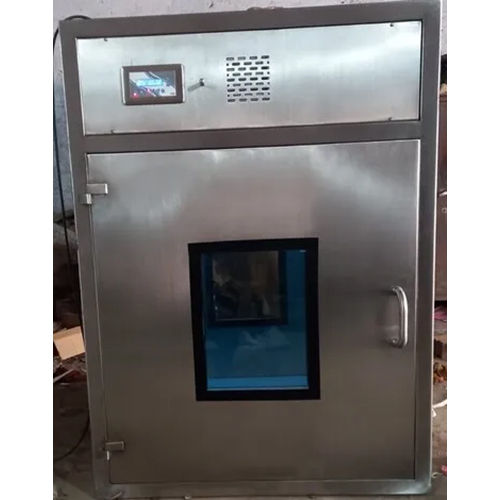

Price:
- 50
- 100
- 200
- 250
- 500
- 1000+
More Products in Pass Box Category
Stainless Steel Dynamic Pass Box
Price 55000 INR / Unit
Minimum Order Quantity : 1 Unit
Feature : High Quality
Condition : New
Voltage : 230 Volt (v)
Material : Stainless steel
SS304 Dynamic Pass Box
Price 65000 INR / Unit
Minimum Order Quantity : 2 Units
Feature : High Quality
Condition : New
Voltage : 230V AC, 50 Hz
Material : Stainless steel
L Shape Static Pass Box
Price 150000 INR / Unit
Minimum Order Quantity : 5 Units
Feature : High Quality
Condition : New
Voltage : 230 Volt (v)
Material : Stainless steel
Static Pass Box
Price 24000 INR / Unit
Minimum Order Quantity : 3 Units
Feature : High Quality
Condition : New
Voltage : 220 V AC
Material : Stainless steel
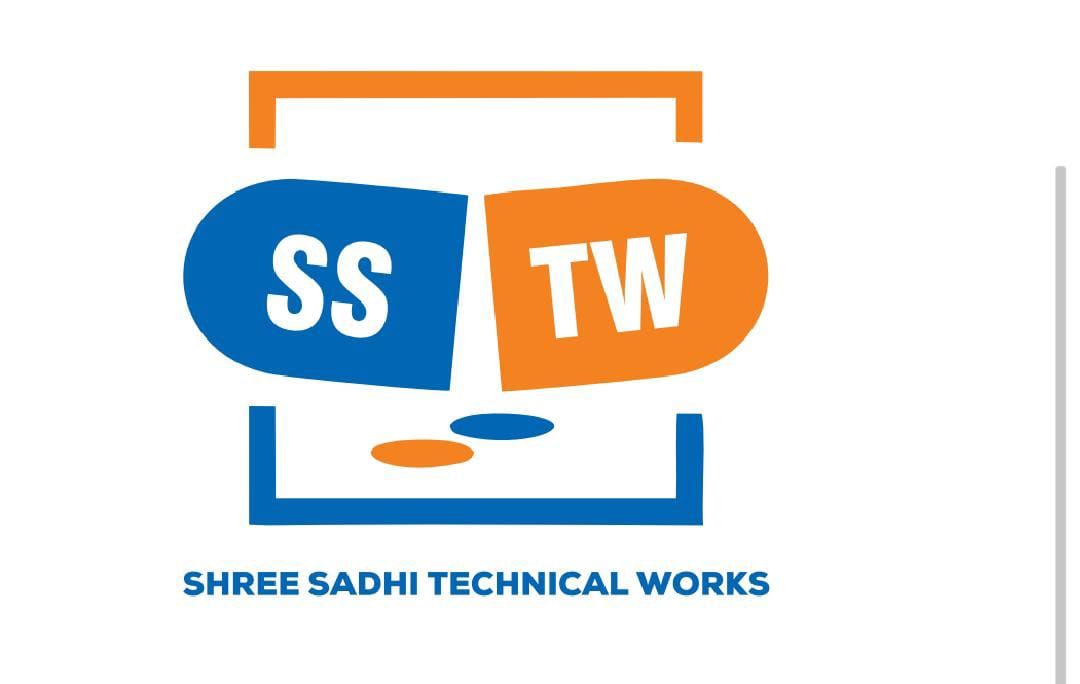
 Send Inquiry
Send Inquiry Send Inquiry
Send Inquiry
